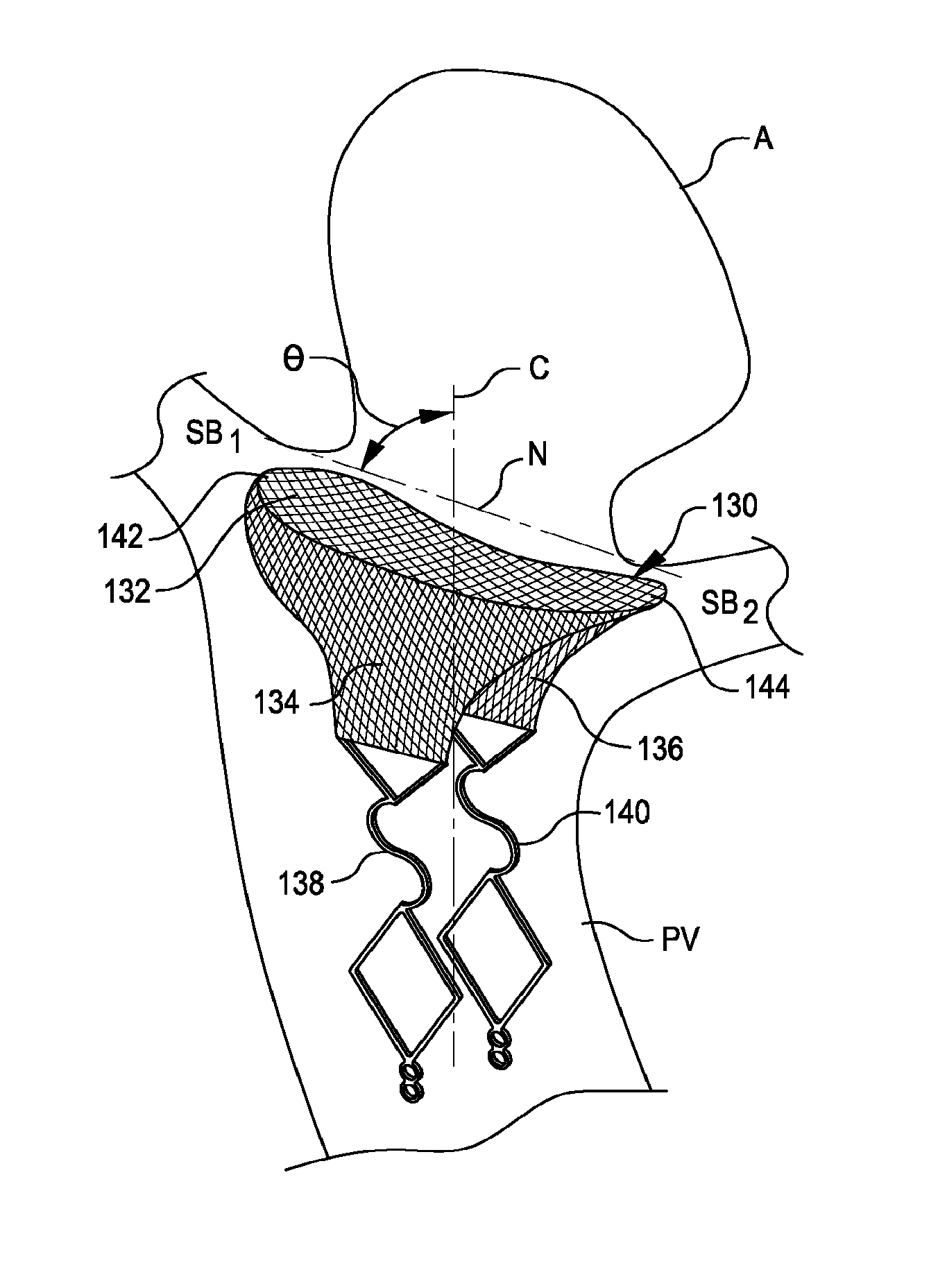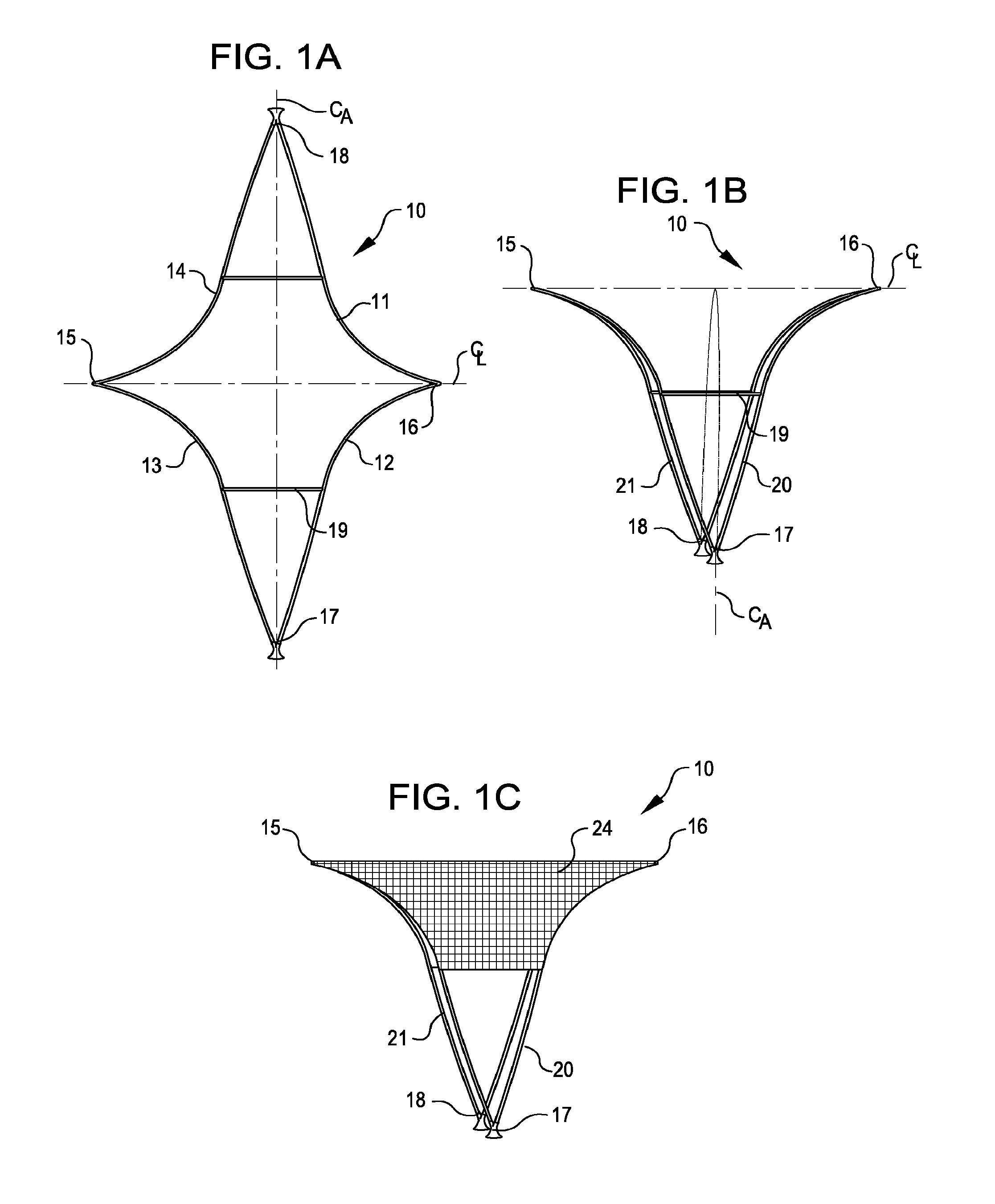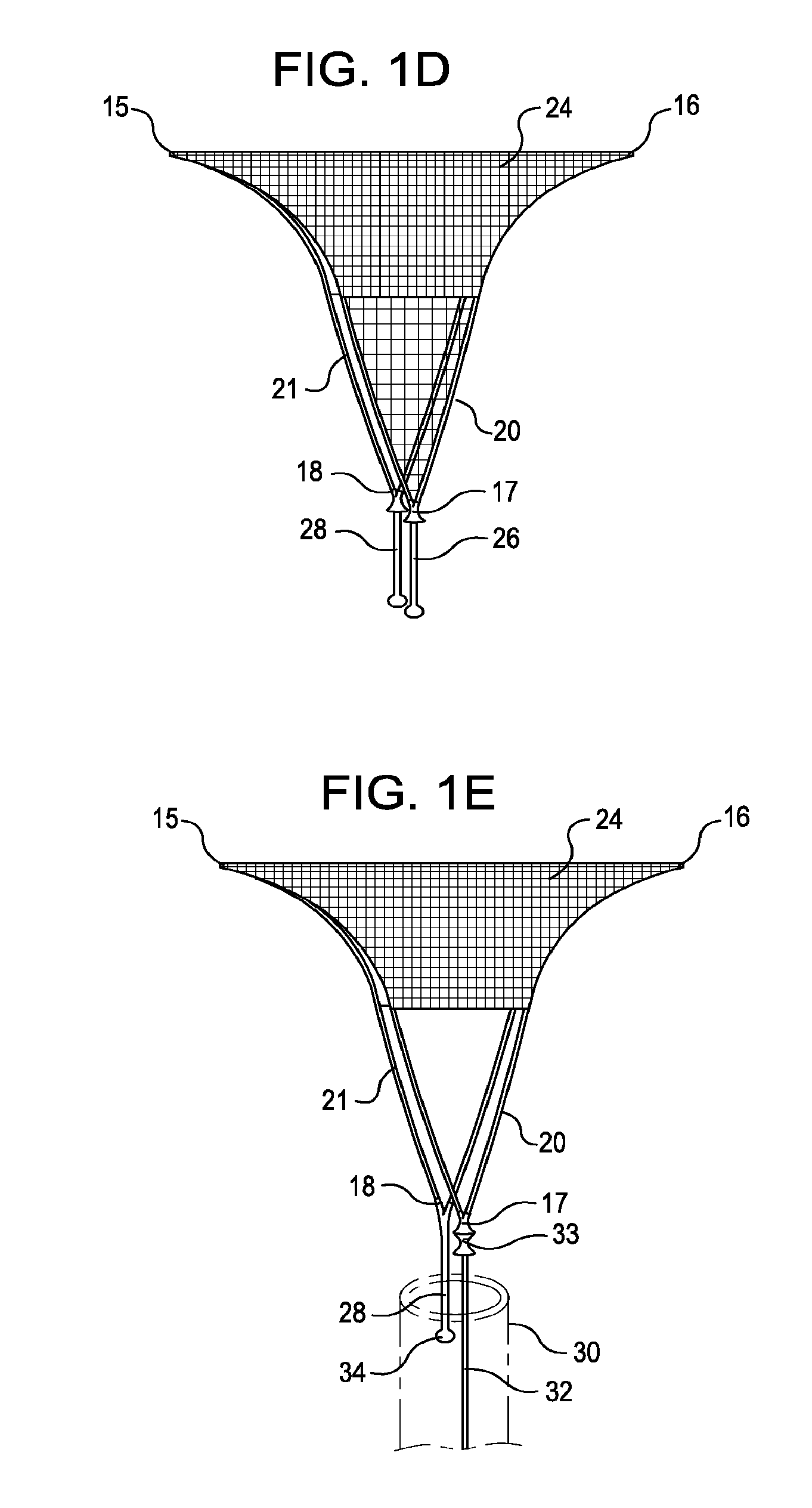Systems and methods for supporting or occluding a physiological opening or cavity
a physiological opening and cavity technology, applied in the field of physiological openings or cavities, can solve the problems of high risks of anesthesia, bleeding and infection during and following these types of procedures, and the surgical techniques for repairing septal defects, blood vessels, and other types of physiological irregularities and defects, and achieves the effects of promoting re-endothelialization and tissue growth, facilitating accurate positioning, placement and monitoring of the device, and facilitating the re-injection of the d
- Summary
- Abstract
- Description
- Claims
- Application Information
AI Technical Summary
Benefits of technology
Problems solved by technology
Method used
Image
Examples
Embodiment Construction
[0058]In general, implantable assemblies of the present invention comprise an implantable device attached to at least one delivery wire or tube and loaded in a catheter or a sheath for delivery to a target site in a human body, such as in the neurovasculature at a site in proximity to a wide mouth, termination or bifurcation aneurysm. The implantable device is delivered to the target site in a small diameter, constrained condition and is deployed, at the site, to its larger diameter deployed condition. The device, in the deployed condition, comprises a generally inverted U-shaped three-dimensional framework support structure having a perimeter structure configured to be positioned in close proximity to, and generally contacting tissue at the neck of the aneurysm along at least a portion of its perimeter.
[0059]The framework support perimeter structure may incorporate substantially opposed lateral corners, or wing tip structures, lying on a longitudinal centerline of the framework sup...
PUM
 Login to View More
Login to View More Abstract
Description
Claims
Application Information
 Login to View More
Login to View More - R&D
- Intellectual Property
- Life Sciences
- Materials
- Tech Scout
- Unparalleled Data Quality
- Higher Quality Content
- 60% Fewer Hallucinations
Browse by: Latest US Patents, China's latest patents, Technical Efficacy Thesaurus, Application Domain, Technology Topic, Popular Technical Reports.
© 2025 PatSnap. All rights reserved.Legal|Privacy policy|Modern Slavery Act Transparency Statement|Sitemap|About US| Contact US: help@patsnap.com



